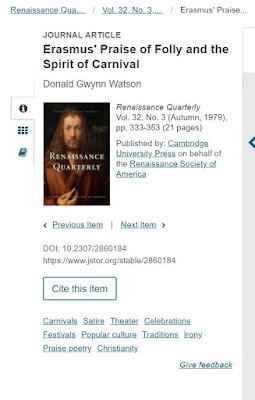
from the good humour that pervades this portrait, i'm guessing eichenberg had actually read erasmus' "in praise of folly" ...
https://en.wikipedia.org/wiki/In_Praise_of_Folly
https://warburg.sas.ac.uk/pdf/nah7375b2325486.pdf
and it looks as if he knew of holbein's marginal sketches ...
eichenberg's drawing was possibly/probably/maybe conceived with this portrait in mind, too ...
https://research.britishmuseum.org/research/collection_online/collection_object_details.aspx?assetId=1209517001&objectId=3468613&partId=1
https://research.britishmuseum.org/research/collection_online/collection_object_details/collection_image_gallery.aspx?assetId=1209517001&objectId=3468613&partId=1
and this by durer portrait, i would guess ...

this V&A note clarifies the genesis of durer's portrait
http://collections.vam.ac.uk/item/O154972/portrait-of-desiderius-erasmus-print-durer-albrecht/
MOST INTERESTINGLY ...
in the foreground of his drawing, Eichenberg includes the small figure of the Roman god terminus ... Terminus became Erasmus' personal and somewhat controversial emblem ... and thereby hangs the following tale, as told by John Rowlands of The British Museum

donald watson's article for renaissance quarterly illuminates the jester puppet in full context ...

thankyou, jstor !!!
lastly, i was wondering, seven years ago ... if erasmus had influenced montaigne ... s'obvious, of course ...
https://thenewemotionalblackmailershandbook.blogspot.com/2012/08/#634578291266058173



























































